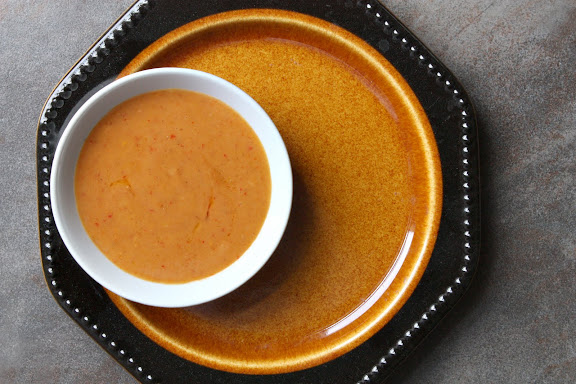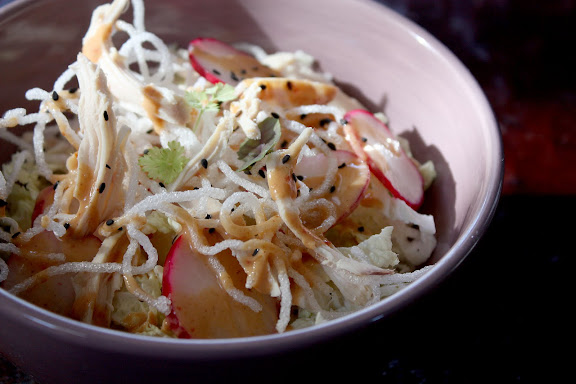
My mother, in whose memory this site was created, was a cookbook addict. Her philosophy in life was based upon a statement attributed to Erasmus of Rotterdam (1466-1536): When I get a little money I buy books, and if any is left I buy food and clothes. Replace “books” with “cookbooks” and you’ll get my mother.
Over the years, she had passed on several of her cookbooks to me for fear that years of living in the United States would result in me abandoning the cuisine of my original country or, worse, becoming so culinarily syncretic that I can’t tell how a dish is supposed to taste. Well, Mom is no longer with us, so she and I can’t have our once never-ending discussion on her view on culinary syncretism.
How I miss debating with Mom. Heck, I miss hearing her voice, period.
Thai cookbooks, especially old ones, are notorious for errors, typographical or otherwise, and way-off measurements. The sin of omission of key ingredients is also exuberantly committed. You really have to pay attention and exercise not only commonsense but also extreme caution. If a cracker recipe calls for a liter of coconut milk and 1/2 cup of rice flour, a red flag should go up. With that kind of ratio, you know you’re more likely going to get coconut milk goo rather than crunchy crackers. When chicken is mysteriously absent from a Thai chicken salad recipe, you know something’s rotten in Bangkok.
This is clear evidence that the writer and the proofreader have conspired against you. Please be understanding if you see me walk around looking frustrated and paranoid for chances are I have just finished reading a few Thai cookbooks. They have that effect on otherwise trusting and relaxed human beings.
That’s why Mom’s cookbooks are so precious to me. They’re full of her handwritten corrections, tweaks, comments, suggested variations, reports of people’s responses, etc. When it comes to marginal notation, my mom would have given the Masoretes a run for their shekels.
I think of these notes as Mom’s posthumous road signs which have several times saved me from potholes, deer, and boulders on the road of cooking. Sometimes, some of her “road signs” even lead to cool shortcuts which yield results that are close or identical to those achieved through a more laborious means.
A peanut sauce recipe in an old coconut milk-stained cookbook supplemented with my mom’s handwritten notes is a case in point. If you’ve ever felt overwhelmed by the number of herbs and spices called for by several recipes for authentic Thai peanut sauce, here’s my mom’s recipe to the rescue.
All the herbs and spices are found in commercial Thai red curry paste. No need to hunt down all 20 of them. Interestingly, Mom opted granulated sugar and vinegar as handy replacements for the traditional palm sugar and tamarind pulp respectively — all with no lethal effects. Our family has enjoyed the sauce made this way for years.
_________________________________________
PRODUCTS THAT HELP YOU CREATE THIS RECIPE
- One 13.5-ounce can of full-fat, unsweetened coconut milk
- 2 ounces (approximately ¼ cup) of Thai red (mom’s preference and mine too) or Massaman curry paste (milder but flavorful)
- ¾ cup unsweetened (natural) creamy peanut butter (Do not use regular peanut butter or anything with added emulsifiers. It must be the type of natural peanut butter that comes with natural peanut oil on top and no sugar added. I often use Smucker's.)
- ½ tablespoon salt
- ¾ cup sugar
- 2 tablespoons of apple cider vinegar or white vinegar (Do not use white wine, red wine, balsamic, or anything else — not even rice vinegar)
- ½ cup water
- Put everything into a medium heavy-bottomed pot and bring to a very gentle boil over medium heat, whisking constantly.
- Let the mixture simmer for 3-5 minutes over low heat; be careful not to let the mixture scorch at the bottom of the pot.
- Take the pot off the heat, let the sauce cool down to room temperature (or slightly warmer), and serve the sauce with satay or fried tofu.










286 Responses to Easy Thai Peanut Sauce Recipe: How to Make My Mom’s Thai Satay Sauce